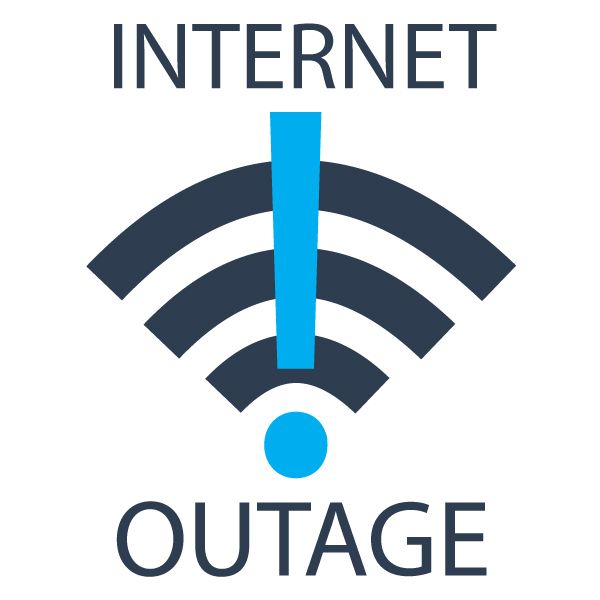Discover how AI is transforming internet services, from optimizing network management to enhancing user experiences and improving security. Explore the future of connectivity with AI-driven innovations, and learn about the pros and cons of integrating AI into internet services.
23 October, 2024 | Posted by: Pablo Mendoza
Category: News | No Comments

The internet has become an indispensable part of our daily lives, enabling communication, commerce, entertainment, and more. As the demand for faster and more reliable internet grows, Artificial Intelligence (AI) is emerging as a powerful tool that is revolutionizing internet services. From optimizing network management to enhancing user experiences and improving security, AI is reshaping how we connect to the world.
One of the most significant impacts of AI on internet services is in the area of network management. Traditional network management relies on human intervention to monitor and troubleshoot issues. However, as networks become more complex, AI offers a more efficient solution.
Internet providers like Verizon and AT&T are leading the way in implementing AI-driven network management to enhance their services. These companies use AI to monitor and optimize their networks, ensuring high performance and reliability for their customers.
AI is also transforming the way users interact with internet services, making the experience more personalized and efficient.
As cyber threats become more sophisticated, AI plays a crucial role in enhancing the security of internet services.
The rollout of 5G networks is set to revolutionize connectivity, and AI is at the heart of this transformation.
The integration of AI into internet services is still in its early stages, but the potential for growth is enormous.
| Pros | Cons |
|---|---|
| Increased Efficiency: AI optimizes network management, leading to faster and more reliable internet services. | Privacy Concerns: The extensive data collection required for AI can raise concerns about user privacy and data security. |
| Enhanced Security: AI can detect and prevent cyber threats in real-time, offering greater protection for users. | Ethical Issues: AI systems may introduce biases and lack transparency, leading to potential misuse. |
| Personalized User Experience: AI-driven personalization leads to better service recommendations and customer satisfaction. | High Implementation Costs: Integrating AI into internet services can be expensive, potentially increasing costs for providers and consumers. |
AI is revolutionizing internet services by making networks more efficient, enhancing security, and improving the user experience. As AI technology continues to evolve, it will play an increasingly important role in shaping the future of connectivity. However, it is crucial to address the ethical and privacy concerns associated with AI to ensure that its benefits are realized without compromising user trust. The future of AI-driven internet services is bright, promising faster, safer, and more personalized connectivity for all.
Hurricane Beryl, a powerful Category 4 storm, recently unleashed its fury on Jamaica and several Caribbean islands, leaving a path of destruction. With winds up to 140 mph, Beryl caused significant damage to infrastructure, homes, and communities.
23 October, 2024 | Posted by: Pablo Mendoza
Category: News | No Comments

Hurricane Beryl, a powerful Category 4 storm, recently unleashed its fury on Jamaica and several Caribbean islands, leaving a path of destruction. With winds up to 140 mph, Beryl caused significant damage to infrastructure, homes, and communities. Jamaica's Norman Manley International Airport faced extensive damage, and many areas experienced severe flooding and power outages.
In Jamaica, entire communities like Portland Cottage in Clarendon were devastated. Homes were left roofless, streets were blocked by fallen trees and utility poles, and residents faced immense challenges in the aftermath. The storm's impact extended beyond Jamaica, hitting St. Vincent, the Grenadines, Barbados, and Grenada, where homes were destroyed and livelihoods disrupted.
The immediate aftermath saw people rummaging through debris to retrieve their belongings, with many left homeless and in dire need of basic supplies. Schools and businesses were closed, and access to clean water became a critical issue. The death toll across the Caribbean stood at seven, with three fatalities reported in Grenada and additional casualties in St. Vincent and northern Venezuela.
The response to Hurricane Beryl has involved significant international aid and local efforts. Several internet companies have stepped in to assist with restoration and relief:
Humanitarian organizations such as the Red Cross and local governments have been instrumental in providing immediate relief, including food, water, and medical supplies. Volunteers from around the world have come together to assist in rebuilding efforts.
The involvement of these companies and organizations has made a significant difference in the recovery process:
Amidst the devastation, stories of resilience and community spirit have emerged. In Clarendon, neighbors have come together to clear debris, share resources, and support each other. Volunteers and international aid workers have provided food, water, and medical supplies, showcasing a global effort to help those in need.
One inspiring story is that of a local schoolteacher in Grenada who turned her home into a temporary shelter for displaced families. Her actions, along with those of many others, highlight the strength and compassion of the human spirit in times of crisis.
In Barbados, community leaders have organized local clean-up drives and fundraisers to support rebuilding efforts. These grassroots initiatives demonstrate the power of collective action in overcoming adversity.
The road to recovery will be long, but the efforts of local and international communities offer hope. As rebuilding begins, it is crucial to focus on creating more resilient infrastructure to withstand future storms. Continued support from internet companies and other organizations will be essential in ensuring a swift and effective recovery.
Future efforts will also involve:
Hurricane Beryl has tested the strength of communities across the Caribbean, but the rapid response and ongoing support highlight the power of unity and resilience. By staying informed, prepared, and connected, we can navigate these challenges and build a stronger future together.
For more detailed updates on the situation and ongoing relief efforts, you can visit the following sources:
Stay safe and support those affected by contributing to relief efforts and spreading awareness.
Internet outages can be frustrating and disruptive, especially in our increasingly connected world. Whether it’s for work, entertainment, or staying in touch with loved ones, a reliable internet connection is essential. Preparing for potential outages can help minimize the inconvenience and ensure you stay connected. Here’s a step-by-step guide to help you prepare effectively.
23 October, 2024 | Posted by: Pablo Mendoza
Category: News | No Comments

Internet outages can be frustrating and disruptive, especially in our increasingly connected world. Whether it’s for work, entertainment, or staying in touch with loved ones, a reliable internet connection is essential. Preparing for potential outages can help minimize the inconvenience and ensure you stay connected. Here’s a step-by-step guide to help you prepare effectively.
Before preparing for an internet outage, it’s essential to understand your internet usage and needs. Ask yourself:
Ensure you have alternative communication methods ready:
A mobile hotspot can provide an alternative internet connection during outages:
Ensure you have access to important documents and media even without an internet connection:
Data loss can be a significant concern during outages. Set up automatic backups:
Ensure your equipment is in good working condition:
Have offline alternatives for essential online services:
Ensure you can continue working during an outage:
Stay informed about potential and ongoing outages:
Keep in touch with your ISP to report and resolve issues:
Prepare an emergency kit that includes:
Being prepared for internet outages can significantly reduce their impact on your daily life. By following these steps, you can ensure you have the necessary tools and plans in place to stay connected and productive, even when your primary internet connection is unavailable. Stay proactive and keep these preparations up to date to handle any future outages smoothly.
San Antonio has been hit with a wave of internet outages recently, causing significant disruptions for residents and businesses. These outages have affected major internet service providers, including Spectrum, AT&T, Google Fiber, and Consolidated Communications. Here's a detailed analysis of what's been happening, what customers are experiencing, what they can do, how the companies are responding, and what's next.
23 October, 2024 | Posted by: Pablo Mendoza
Category: News | No Comments

San Antonio has been hit with a wave of internet outages recently, causing significant disruptions for residents and businesses. These outages have affected major internet service providers, including Spectrum, AT&T, Google Fiber, and Consolidated Communications. Here's a detailed analysis of what's been happening, what customers are experiencing, what they can do, how the companies are responding, and what's next.
Spectrum has been one of the hardest-hit providers, with numerous reports of outages across San Antonio. Users have experienced frequent and prolonged service interruptions, often during critical times. The complaints have included issues with customer service and the effectiveness of the responses. One user recounted being disconnected during a critical work call involving a $4.5 million contract, highlighting the severe professional implications of these outages
AT&T customers have also faced significant challenges, with many reporting long waits for technical support and repeated service disruptions. Frustrations have been voiced on social media, with users contemplating switching providers due to the frequent and prolonged outages
Google Fiber, known for its high-speed internet, has not been immune to issues. Users have reported multiple disconnections, sometimes lasting several hours. The lack of prompt customer service has been a recurring complaint, with many customers needing to troubleshoot problems on their own
Consolidated Communications users have experienced sporadic outages. While fewer reports have surfaced compared to Spectrum and AT&T, the disruptions still impact those relying on a consistent internet connection for daily activities. Users have reported prolonged periods without service and difficulties in receiving timely support
During these outages, there are several steps customers can take to manage the situation:
Spectrum has been addressing the outages by deploying technical teams to affected areas. They have been communicating with customers via social media to provide updates. However, the speed and effectiveness of these responses have been questioned by many customers
AT&T has been working on infrastructure improvements and providing support through their customer service channels. However, many customers feel that the responses have been slow and inadequate. AT&T has also been pushing updates through their social media channels and official website
Google Fiber has been troubleshooting issues remotely and scheduling technician visits for more severe problems. While some customers have reported positive experiences, others have found the speed of resolution lacking
Consolidated Communications has been handling outages by offering remote support and scheduling technician visits when necessary. The company has been relatively quiet on social media, leading to some customer dissatisfaction regarding communication and transparency
Looking forward, service providers are expected to enhance their infrastructure and improve customer support to prevent such widespread outages. Investments in better technology and faster response systems are likely. For customers, staying informed and proactive during outages is crucial. Regularly checking for updates from service providers and utilizing alternative connectivity options can help mitigate the impact of these disruptions.
For the latest updates on outages and to report issues, you can visit the following links:
Stay updated through social media channels as well:
For more detailed news on the outages, refer to these articles:
These ongoing internet outages across major providers in San Antonio highlight a critical need for improved infrastructure and better customer service to handle such disruptions more effectively. If you are experiencing an outage, it is recommended to report it to your service provider immediately and check their status pages for updates.
23 October, 2024 | Posted by: Pablo Mendoza
Category: News | No Comments

San Antonio has recently faced multiple internet outages affecting residents and businesses across the city. Here’s a detailed look at the latest disruptions reported by users, providing insights into the scope and impact of these outages.
Spectrum has seen a significant number of outages in San Antonio. Users have reported service disruptions multiple times over the past few weeks, causing frustration among those who rely on a stable internet connection for work, education, and entertainment. Common complaints include intermittent connectivity, prolonged outages, and inadequate customer support responses.
For instance, one user highlighted being disconnected during a critical work call involving a $4.5 million contract negotiation, showcasing the severe professional implications of these outages. Other users have reported issues with customer service, expressing dissatisfaction with the lack of timely resolutions and the recurring nature of the problems.
Read more on Spectrum Outages.
AT&T has also faced considerable challenges, with numerous reports of outages across various parts of San Antonio. Users have expressed their frustrations on social media, mentioning long waits for technical support and repeated disruptions. Some have even considered switching providers due to the frequency and duration of the outages.
More details can be found on AT&T Outages.
Google Fiber, although praised for its high-speed internet, has not been immune to issues. Users have reported outages lasting several hours, which significantly disrupt their daily routines. The lack of prompt customer service has also been a point of contention, with many users having to troubleshoot issues on their own.
Check out the latest updates on Google Fiber Outages.
Consolidated Communications users have experienced sporadic outages as well. While the number of reports is lower compared to Spectrum and AT&T, the issues still impact those relying on a consistent internet connection for their daily activities. Users have noted prolonged periods without service and difficulties in getting timely support.
Find more information on Consolidated Communications Outages.
These ongoing internet outages across major providers in San Antonio highlight a critical need for improved infrastructure and better customer service to handle such disruptions more effectively. If you are experiencing an outage, it is recommended to report it to your service provider immediately and check their status pages for updates.
Additionally, keep updated through social media channels such as Facebook and Twitter.